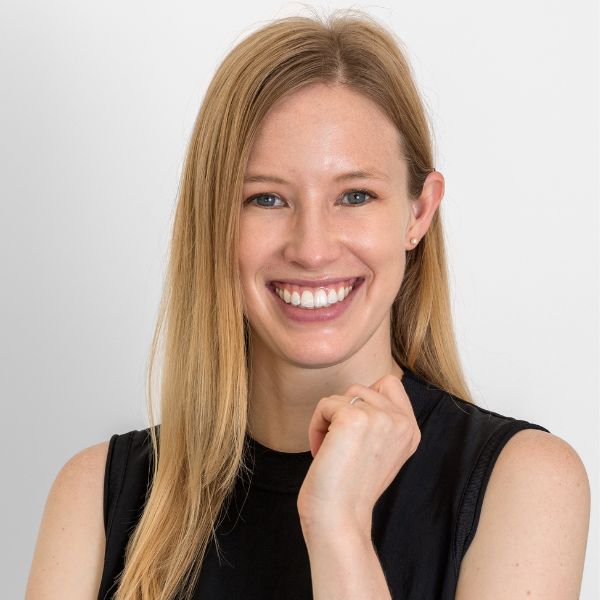
PEACHY CEO CAROLYN TREASURE: TO MANAGE A BUSINESS, YOU HAVE TO ZOOM IN AND ZOOM OUT
Via RHO
Peachy CEO Carolyn Treasure shares her playbook on keeping cool under pressure.
Carolyn Treasure’s resume is enough to make anyone question their own life decisions: Treasure graduated from Harvard Medical School, completed three years of residency as a physician at Brigham and Women’s Hospital in Boston, and studied for a Masters in Business Administration at Harvard Business School.
Today, Treasure is CEO of her own company, a skincare startup called Peachy. Peachy sells prescription retinoids, mineral sunscreen, and preventative Botox for the treatment and prevention of wrinkles.
“The second I started medical school I got this influx of questions on what to do to treat and prevent facial wrinkles,” Treasure says. “More than anything else.”
“Healthcare is very risk-averse,” she continues. “You’re not very much rewarded for thinking outside the box, or thinking through things differently. It wasn’t until that interdisciplinary experience at HBS when I realized the market opportunity and had the inspiration, confidence, and mentorship to actually start Peachy.”
I asked Treasure for her playbook on management strategies, operations tricks, and keeping cool under pressure. Her answers have been lightly edited and condensed.
Doctors are busy. Founders are busy. What tricks do you use to manage your time?
I listened to an interview with Drew Houston, the founder of Dropbox, many years ago. He did this exercise where he recorded how he used his time for a week straight. He recorded how he used every 10-minute chunk of time.
He learned how much of his time was going to things that like weren’t on the path to achieving the goals he set prior to doing this exercise. I thought it sounded like a great idea. I did it myself in business school. It made me focus on being very purposeful with longterm goals for the year ahead, and short term goals for the week, and even micro-goals for the day, and really subdividing what you want to get done each day.
We’re not robots. There has to be downtime. There has to be exercise. There has to be that time for creativity. It’s helpful to get very, very granular with what needs to be done, how you spend your time, and how it directly relates to what needs to be done.
What tools do you use to set goals and manage your time?
In medical school and residency, I really honed my love for to-do lists. I always jokingly say I think with a pen. I write out the specific things to do for the day, whether it’s the procedures that need to be done on a patient or what needs to be done for the overall marketing strategy for Peachy.
How similar is being a CEO to being a physician?
There’s a lot of overlap. What I’ve learned is you have to have this ability to constantly zoom in and zoom out. Zoom in when needed on the micro-details of the five or six things that have to be done to get one small project across the finish line, but then almost in tandem, zoom out and see the big to-dos that need to be done.
Patient care in the hospital is very similar to that. If someone comes in for a heart attack, for instance, your goal is to ultimately have them be as safe as possible, retain as much health as possible, and be able to be discharged from the hospital in the best condition as possible.
But before reaching that goal, there’s a lot of physiology, there’s a lot of competing details, all the way to where they’re going to go post-discharge. Unbeknownst to me at the time, it was very good training for being a founder of an early-stage startup.
How do you triage problems? How do you determine what to prioritize at Peachy?
I think first and foremost, you have to have clarity and alignment across all parties—whether that’s employees, co-founders, or investors—on vision. Both short, medium, and long-term vision.
You have to have general alignment on what success looks like. And, it’s important to have each and every person know the one thing that they have to do to ensure success.
That’s the responsibility of a leader of anything—an organization, a team, a group—to provide those guidelines for people to know what is mission-critical.
How did you decide the mission for Peachy?
What helped me was to think in tangible timeframes. Saying, “I want to get here by such and such date.” Then you can work backward for the things that absolutely need to be accomplished and the major milestones that have to be hit.
For me, that was the way of setting out the nitty gritty specifics of what needed to be met when. In terms of the overall vision, and the brand focus of what we’ve created, I think of it almost like Marie Kondo-ing.
You pick up an object and you’re like, “Does this bring me happiness?” Yes or no. I see defining the mission and vision as Marie Kondo for a company; you make a decision, and you think about it, and you ask, “Does this bring Peachy happiness?” Then decide yay or nay. So I think those two go hand in hand, but what I’ve learned is the more granular, the better. What can’t be measured can’t be tracked.
And what is the mission at Peachy?
Our goal is to be an approachable space, and approachable environment for people to learn about the science behind wrinkle prevention. I think this is the middle of the Venn diagram with what is lacking in the wrinkle prevention space, but also in US healthcare more broadly.
Not a lot of people would describe an experience with a physician as approachable and fun. And no one would describe learning about the science behind something as approachable and fun. So that’s our goal at Peachy, to have the clinical excellence and the scientific rigor, but to have it in an educational way that doesn’t feel like you’re in 10th-grade chemistry.

